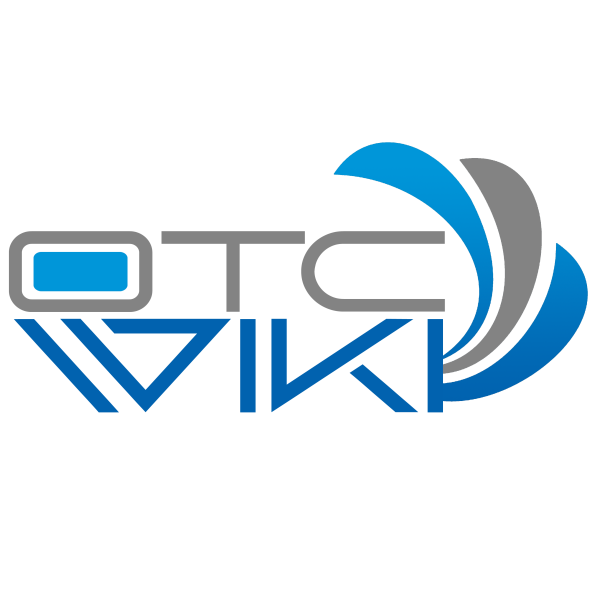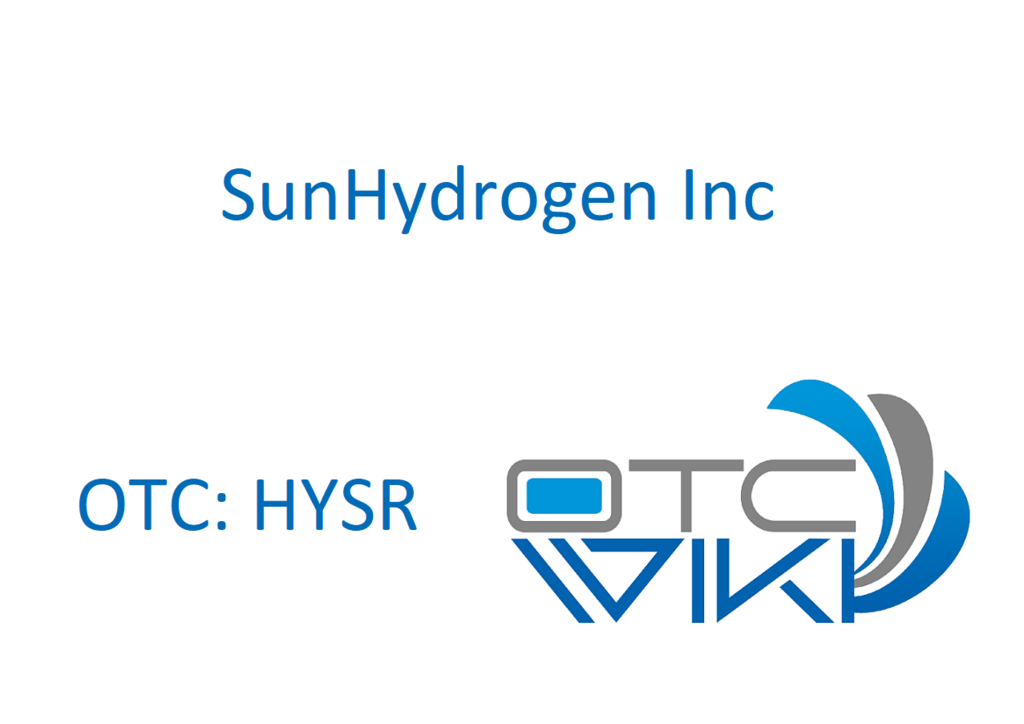Sunhydrogen Inc - HYSR stock
OTC Symbol: HYSR | OTC Tier: OTCQB
About SunHydrogen
SunHydrogen (OTC: HYSR) is a company that is focused on developing a technology to produce low-cost, renewable hydrogen using sunlight and water. The company's goal is to create a sustainable solution for the production of hydrogen, which can be used as a fuel for vehicles and energy storage.[1]
SunHydrogen is part of a growing movement towards renewable hydrogen production, which has the potential to play a significant role in the transition to a low-carbon economy. By using renewable energy sources to produce hydrogen, companies like SunHydrogen are helping to reduce the carbon footprint of hydrogen production and create a more sustainable energy system.
Business Plan
The company is working on scaling up their nanoparticle technology for the mass production of renewable hydrogen. They are also exploring potential partnerships with manufacturing partners to help them achieve their goal of providing continuous large volumes of hydrogen to a small number of locations throughout the country. SunHydrogen is targeting commercial customers such as large cargo fleet operators, utilities, and industrial companies that are in need of clean hydrogen. By providing a sustainable alternative to traditional hydrogen production methods, SunHydrogen is helping to reduce the carbon footprint of these industries and enable the transition to a low-carbon economy.[1]
In addition to their own commercialization efforts, SunHydrogen is also looking to invest in other early-stage companies that are working on renewable hydrogen technology. This strategic investment in TECO 2030, a Norway-based company that is developing zero-emission technology for the maritime and heavy industry sectors, is an example of this approach.[1]
Technology
Nanoparticle-Based System
SunHydrogen's technology is based on the use of a proprietary nanoparticle-based system that is designed to split water molecules into hydrogen and oxygen using sunlight. This process, known as water splitting, is a key step in the production of hydrogen. The company is currently working on improving the efficiency of its technology and scaling up production to demonstrate its viability for commercial use. SunHydrogen has also partnered with research institutions and universities to further develop its technology and explore potential applications in various industries.[2]
Gen 1 and Gen 2
The technology is described based on two stages of development. Gen 1 "utilizes an integrated photoelectrochemical water-splitting device, where solar-converted electrons are maximally transferred to hydrogen chemical bonds. It also features our proprietary holey structure, which enables efficient ion transport to ensure sustainable long-term production of hydrogen." The company has produced 100 Gen 1 demonstration units. Gen 2 is described as nanoparticle technology and is expected to lower costs and greater efficiency which will allow for scalability. According to the company, "It utilizes nano-solar cells to split water into oxygen and hydrogen at the molecular level, extracting hydrogen and leaving behind clean oxygen as the only byproduct. Billions of nanoparticles are bundled together to create one solar hydrogen panel, which can then be mass-produced and implemented globally.[1]
Demonstration
In February, 2025, SunHydrogen, reported that its 1200cm² hydrogen modules achieved a 9% active-area solar-to-hydrogen efficiency during testing at the University of Tokyo. The modules, developed with CTF Solar, were part of the company's 1m² demonstration system.[3] The demonstration, completed in late 2024, integrated solar cells from CTF Solar GmbH into its technology to accelerate market entry. The demonstration, conducted in Coralville, IA, successfully produced hydrogen in subfreezing temperatures.[4]
Partners
Honda R&D Co., Ltd.
SunHydrogen gained a well-known partner in 2024 when it entered into a joint development agreement with Honda's research and development subsidiary. The partnership seeks to advance green hydrogen production technology utilizing Honda R&D's design and manufacturing expertise.[5]
CTF Solar GmbH
SunHydrogen has signed a technology collaboration agreement with CTF Solar GmbH in July, 2024.. This partnership aims to integrate CTF Solar’s cell modules into SunHydrogen’s technology to enhance the production of green hydrogen.[6]
Academic
SunHydrogen's partnerships with various organizations are critical to the success of their technology. The University of Iowa and the University of Michigan are academic partners, and they are working with SunHydrogen to develop and test their nanoparticle-based system for hydrogen production. They are also working with SCHMID Group, InRedox, MSC Co. LTD, Geomatec, Chromis Technologies, RuC2N, and Corning Inc. to address various aspects of the technology's development and scaling.
SCHMID Group
SCHMID Group is focused on the design and engineering of the device housing for SunHydrogen's technology. InRedox and MSC Co. LTD are collaborating with SunHydrogen to improve substrate manufacturing and develop electroplating chemistries, respectively. Geomatec and Corning Inc. are partnering with SunHydrogen to facilitate their transition to large-scale substrate manufacturing.
Chromis Technologies
Chromis Technologies is working with SunHydrogen to integrate both proton exchange membranes (PEM) and anion exchange membranes (AEM) into their proprietary substrates. This collaboration is essential in evaluating performance metrics for sustainable hydrogen production.
Singh Lab at the University of Michigan and RuC2N
SunHydrogen is also working with the Singh Lab at the University of Michigan and RuC2N to identify the best catalyst for hydrogen and oxygen production and to achieve successful catalyst integration.
Overall, SunHydrogen's partnerships with various organizations across different sectors are an essential part of their development process, enabling them to access specialized expertise and resources to address specific technical challenges and accelerate their progress towards commercialization.
Financial Performance
For the full year ending 6/30/2020 the company reported no revenues and total expenses of $1,681,000.[7]
For the full year ending 6/30/2021 the company reported no revenues and total expenses of $5,806,000.[7]
For the full year ending 6/30/2022 the company reported no revenues and total expenses of $4,475,000.[7]
For the full year ending 6/30/2023 the company reported no revenues and total expenses of $9,267,000.[7]
For the full year ending 6/30/2024 the company reported no revenues and total expenses of $5,001,000.[7]
- ↑ 1.0 1.1 1.2 1.3 Sunhydrogen.com. FAQ. Accessed on 4/13/2023.
- ↑ Sun Hydrogen. Technology. Accessed on 4/13/2023.
- ↑ GlobeNewswire. SunHydrogen Achieves Highest Known Efficiency for a Large-Area Hydrogen Module. February 5, 2025.
- ↑ GlobeNewswire. SunHydrogen Completes 1m² Green Hydrogen Panel Demonstration. December 18, 2025.
- ↑ Green Car Congress. SunHydrogen enters joint development agreement with Honda R&D. July 25, 2024. Archive link.
- ↑ GlobeNewswire. SunHydrogen Announces Agreement with CTF Solar GmbH, Global Innovator of Thin Film Solar Cell Modules, to Accelerate Production of Green Hydrogen Panels. July 26, 2024.
- ↑ 7.0 7.1 7.2 7.3 7.4 OTC Markets. HYSR Financials. Accessed on 4/13/2023.

